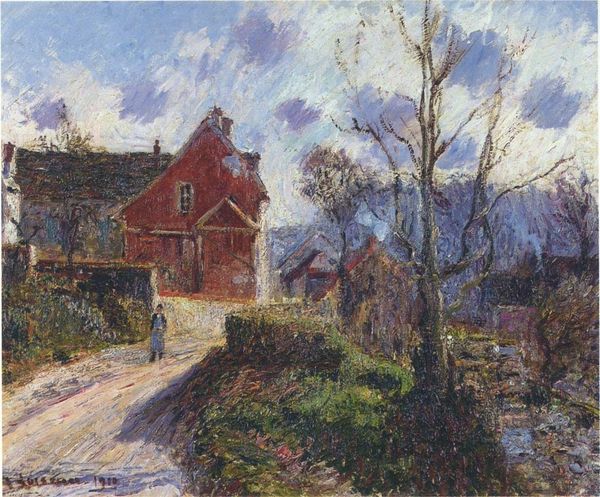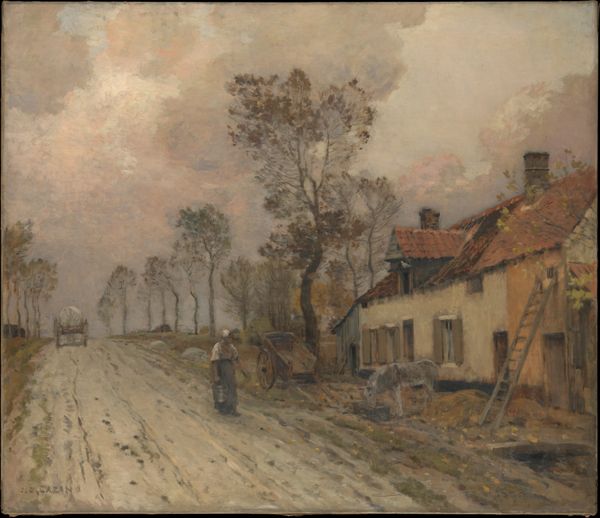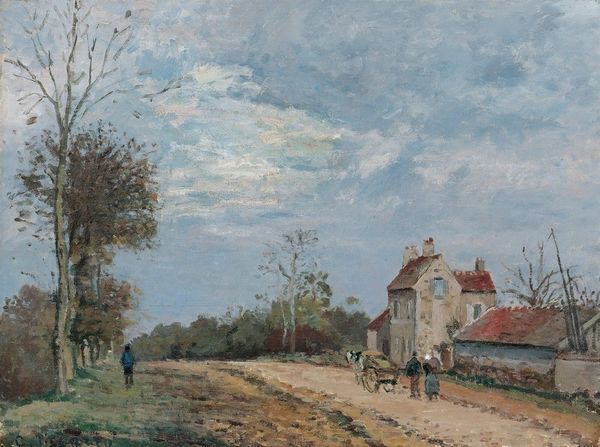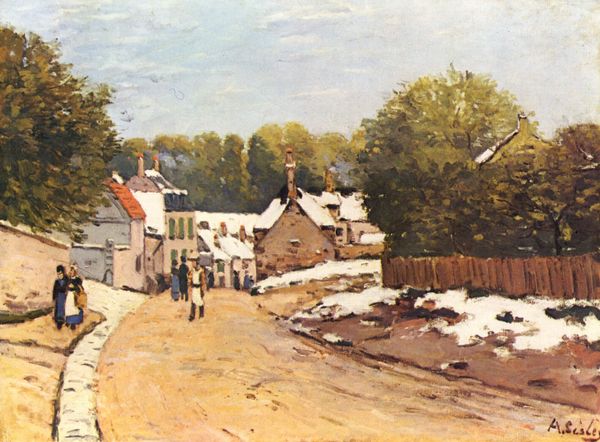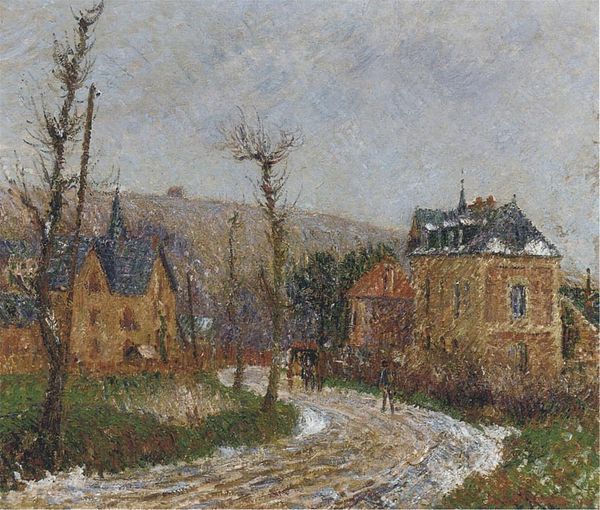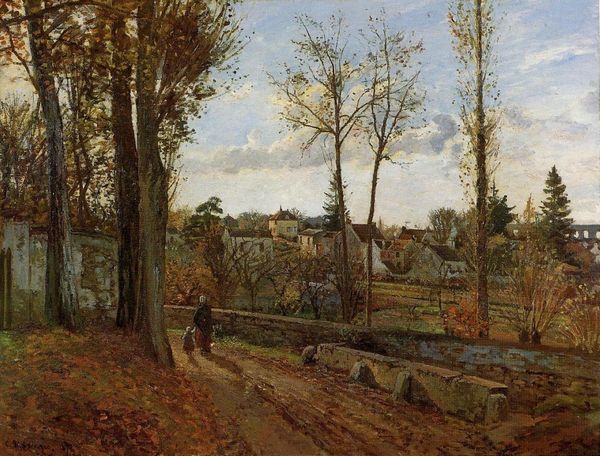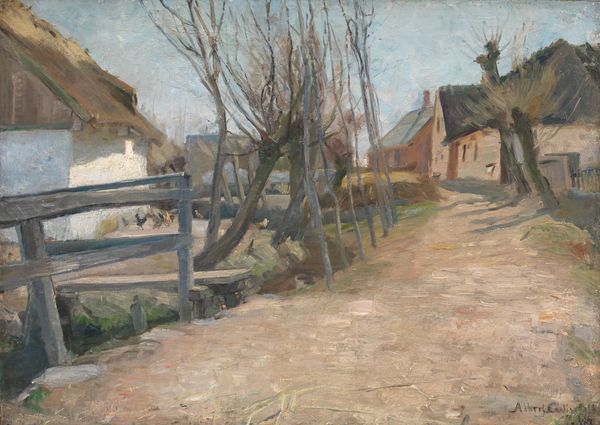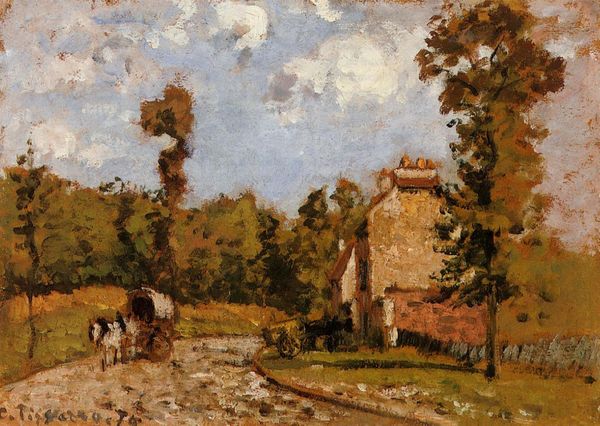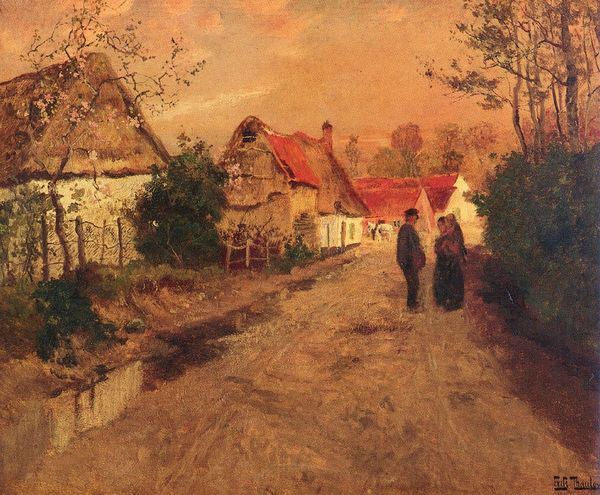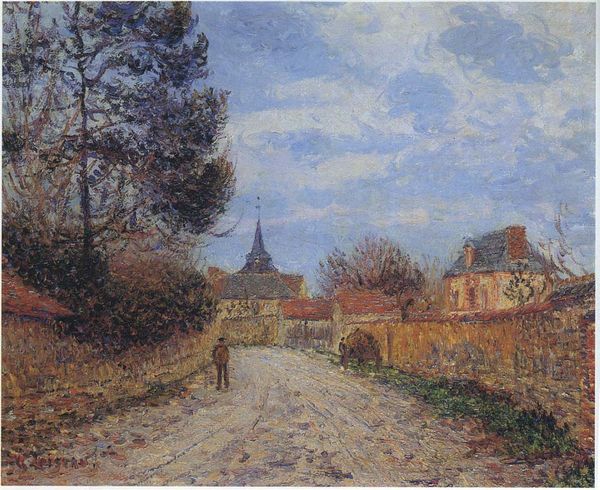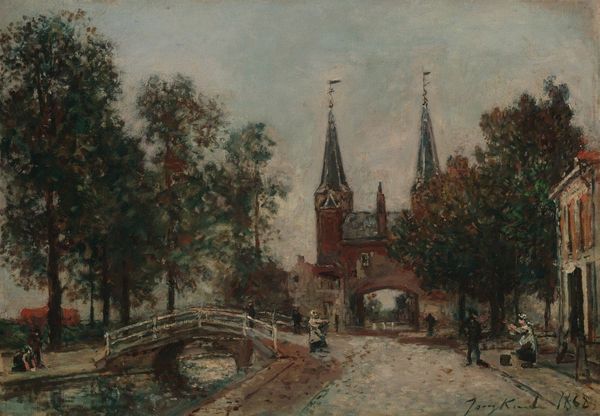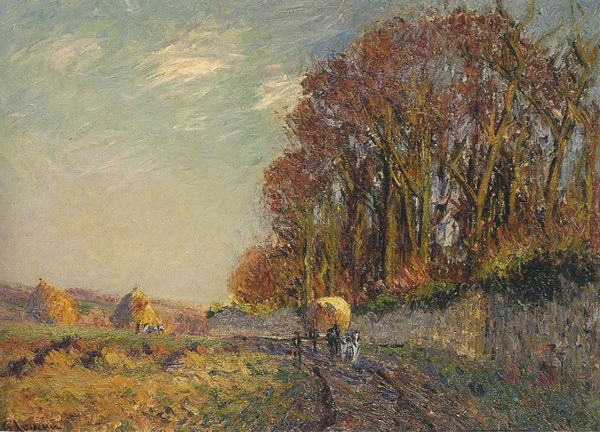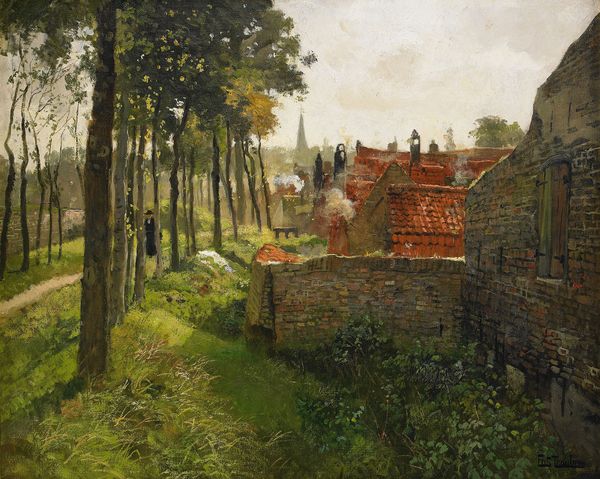
Copyright: Public domain
Hugo Mühlig made this oil painting depicting a medieval half-timbered town, capturing a moment that speaks volumes about the era's social fabric. Here, Mühlig presents a snapshot of late 19th-century Germany, a period marked by rapid industrialization alongside a longing for the pre-industrial past. The painting evokes a sense of nostalgia, idealizing a simpler, more picturesque time. The lone traveler and the distant carriage suggest a society in transition, where traditional ways of life intersect with emerging modern transportation. Mühlig was associated with the Düsseldorf school of painting. The painting's appeal lies in its ability to transport viewers to a bygone era, prompting us to reflect on the values and cultural shifts of Mühlig's time. Art historians delve into such cultural contexts, exploring archival documents and other primary sources to illuminate the artwork's meaning within its specific historical moment. This approach helps us understand art not just as aesthetic objects, but as reflections of the societies that produce them.
Comments
No comments
Be the first to comment and join the conversation on the ultimate creative platform.
